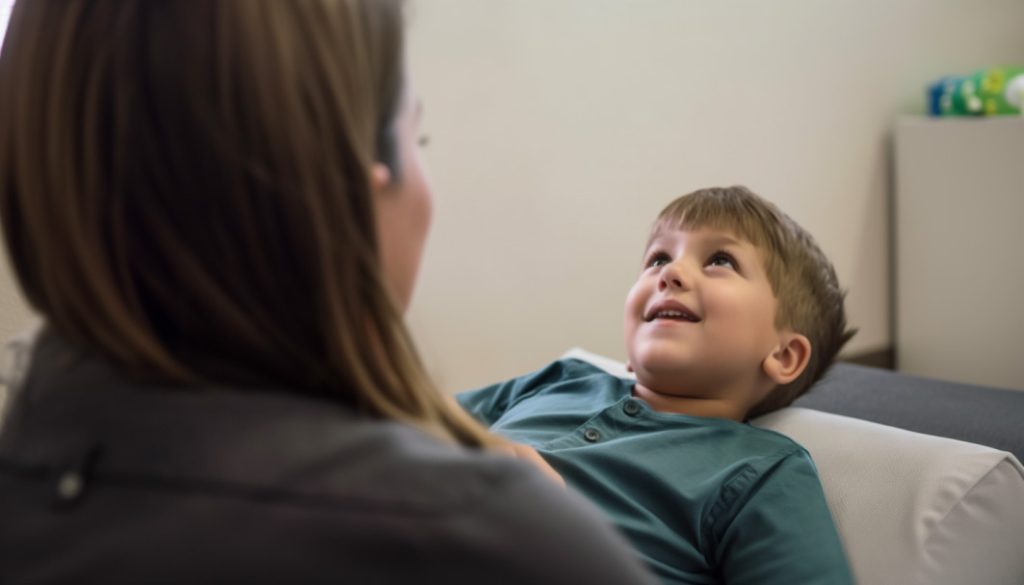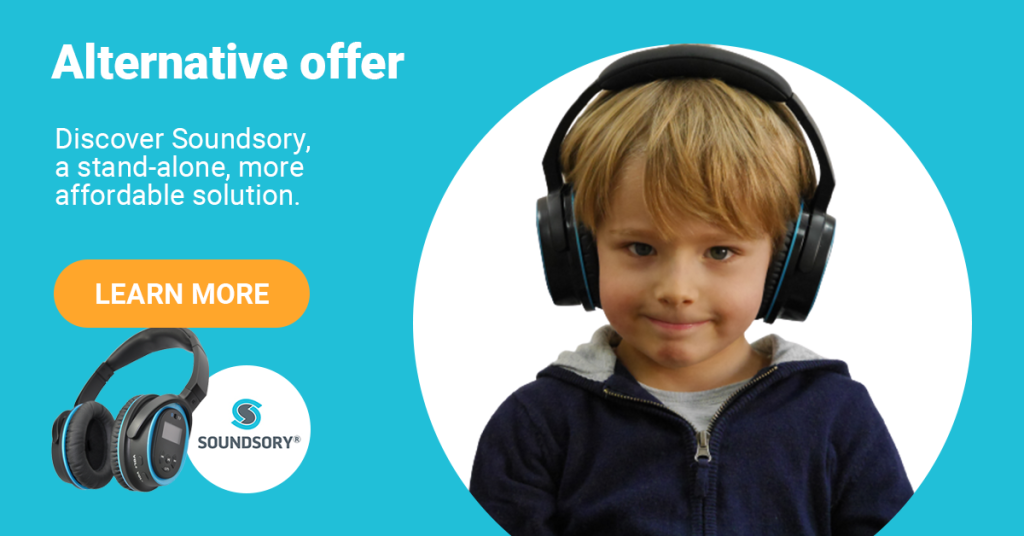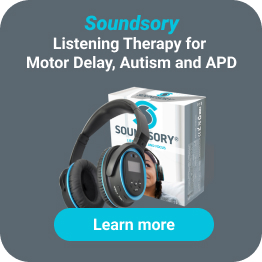Learn more about the Masgutova Neurosensorimotor Reflex Integration (MNRI)
 Valérie Leroux - October 24, 2023
Valérie Leroux - October 24, 2023 
In this article
What is the MNRI® program?
Who can benefit from the MNRI® program?
Where is the MNRI® program coming from?
Which equipment is needed for the MNRI® program?
What is the evidence behind the MNRI® program?
Where can the MNRI® program be practiced?
Can the MNRI® program be personalized?
How much does MNRI® cost?
What are the alternatives or complementary approaches to MNRI®?
Who delivers MNRI®?
What is the Masgutova Neurosensorimotor Reflex Integration (MNRI®)?
Parents and therapists often find it difficult to choose the most suitable therapy program from the extensive range available. In this article, we explore the MNRI® method by Svetlana Masgutova and uncover its impact on neuroplasticity and child development.
Summary of the Masgutova Neurosensorimotor Reflex Integration (MNRI®): A personalized therapy plan to activate primitive reflexes
The MNRI® program, developed by Dr. Svetlana Masgutova, aims to enhance learning, cognitive growth and emotional regulation by improving nervous system connections. Through specific movements, exercises and techniques, the program activates primitive reflexes, fostering overall balance and improved cognitive, motor and emotional functions. The program benefits individuals with various challenges, such as developmental delays, learning disabilities, motor difficulties, speech improvement needs, and more, following the concept of neuroplasticity. It was introduced in 1989 in response to the Ufa train disaster and is now practiced globally. MNRI® does not require specialized equipment and can be tailored to individual needs. The evidence supporting its effectiveness is mainly derived from clinical observations and anecdotal reports. Sessions’ duration, frequency, and consistency can vary, and the program can be practiced in clinical, educational, home-based and virtual settings. The program is highly personalized and conducted by trained practitioners. A complementary program is SOUNDSORY®, which uses rhythm-focused music and exercises for brain stimulation.
PROS
✅ Holistic: Comprehensive approach to sensory integration, reflexes and cognition
✅ Personalized: Tailored methods for individual needs
✅ Versatile: Suitable for various ages and stages
CONS
❌ Complex mastery: Demanding training and understanding
❌ Limited availability in some areas
❌ Time-intensive: Requires frequent sessions and commitment
What is the MNRI® program?
The MNRI® program stands for Masgutova Neurosensorimotor Reflex Integration. It is a comprehensive method created by Dr. Svetlana Masgutova to help with various aspects of human development. This program concentrates on improving the connections in our nervous system, which can positively affect how we think, move and handle our emotions.
MNRI® involves a set of specific movements, exercises and techniques. These are meant to activate and improve primitive reflexes that might not have properly developed or could have been affected by different reasons. By working on these reflexes, the program aims to improve the way our nervous system works, bringing more balance and helping us function better overall.
People like therapists, educators and those who work with individuals facing challenges related to motor skills, learning, speaking and emotions use the MNRI® program. It follows the idea of neuroplasticity, which means that our brain can adapt and change to reach its full potential.
Who can benefit from the MNRI® program?
The MNRI® program can offer benefits to a wide range of individuals, including:
- Children with developmental delays: Children who are slower in learning things like moving, talking, thinking, or controlling their feelings can get help from the MNRI® program. It tries to make their nervous system work better by working on reflexes that might not be working as they should.
- Individuals with learning disabilities: The program’s focus on neurodevelopmental aspects can be advantageous for individuals with learning disabilities. By targeting reflex integration and neural pathways, it can potentially improve cognitive functions and learning abilities.
- People with motor challenges: Those dealing with motor challenges, such as poor coordination, balance issues, or difficulties with fine and gross motor skills, may find the MNRI® program helpful in enhancing their physical abilities.
- People seeking speech improvement: The MNRI® program might be useful for children and adults who want to speak and communicate better.
- Autism Spectrum Disorder (ASD) individuals: The MNRI® program is not a full treatment for autism, but it might help some individuals with ASD to benefit from certain aspects of the MNRI® program, particularly in terms of sensory integration and motor development.
- Emotional and Behavioral Concerns: If someone has a hard time controlling their feelings or their behavior, the MNRI® program might help them.
- Neurological conditions: People with different brain or nerve problems, like cerebral palsy, brain injuries, or developmental disorders, might get some help from parts of the MNRI® program.
- Adults seeking cognitive enhancement: The principles of neuroplasticity and reflex integration aren’t limited to children. Adults looking to improve cognitive functions, memory, and motor skills might also find value in the program.
- Therapists and professionals: Therapists, educators, and professionals working in the fields of neurodevelopment and rehabilitation can benefit from incorporating MNRI® techniques into their practices to enhance the outcomes of their interventions.
Where is the MNRI® program coming from?
The MNRI® program was created in 1989 by Dr. Svetlana Masgutova, a Russian neuroscientist. She developed the program in response to the needs of children who had been physically and emotionally traumatized by the Ufa train disaster. It was introduced in the US in 1996 and is now practiced in over 40 countries. The program was originally called the Masgutova Reflex Integration Method, but it was renamed the MNRI® program in 2000.
Inspired by her studies in neurophysiology, psychology and rehabilitation, Dr. Svetlana Masgutova began developing the MNRI® program as a holistic approach to address various challenges related to neurodevelopmental disorders and difficulties. Drawing from her background in neurophysiology and her observation of reflex patterns, she devised a set of techniques and exercises aimed at stimulating and integrating reflexes within the nervous system.
Which equipment is needed for the MNRI® program?
The Masgutova Neurosensorimotor Reflex Integration (MNRI®) program typically does not require specialized equipment. It primarily relies on specific techniques, movements, and exercises that can be performed using simple props and tools commonly found in therapeutic and educational settings. The focus is on stimulating the nervous system and integrating reflexes, rather than relying on complex equipment. However, some basic items that might be used during MNRI® sessions include:
- Exercise mats: Comfortable mats or padded surfaces provide a suitable space for individuals to perform various movements and exercises.
- Stability balls: Stability balls can be used for balance and coordination exercises, helping individuals engage their core muscles and enhance motor skills.
- Resistance bands: These elastic bands can be used for resistance training to target specific muscle groups and improve strength and coordination.
- Pillows or cushions: These props might be used to provide support or create different surfaces for individuals to engage in various movements and sensory activities.
- Texture mats or surfaces: Textured materials or surfaces can stimulate sensory pathways and enhance tactile input during exercises.
- Small objects: Simple objects like bean bags, balls, or handheld tools might be incorporated into activities to enhance hand-eye coordination and fine motor skills.
- Visual aids: Visual aids such as pictures, diagrams, or videos might be used to facilitate understanding and engagement during sessions.
- Music or sound devices: Soft music or sound devices can create a calming or stimulating environment, depending on the therapeutic goals of the session.
- Props for specific exercises: Depending on the specific reflexes or motor patterns being targeted, therapists might use specific props like swings, climbing structures or balance boards.
What is the evidence behind the MNRI® program?
The evidence supporting the effectiveness of the MNRI® program is somewhat limited compared to more established therapeutic approaches. Here is an overview of the available evidence:
· Clinical observations and case studies: Much of the early evidence for the MNRI® program comes from clinical observations and individual case studies. Practitioners and therapists have reported positive outcomes in terms of motor skills improvement, sensory integration, emotional regulation and cognitive development in some individuals.
· Anecdotal reports: Many families, therapists and practitioners have reported anecdotal success stories and improvements in individuals who have undergone the MNRI® program. These reports often highlight positive changes in motor abilities, speech development and overall well-being.
A review published in 2022 showed that most studies have been developed by Dr. Masgutova and her affiliates [1].
Where can the MNRI® program be practiced?
Here are some common settings where the MNRI® program can be practiced:
- Clinical settings: Many trained MNRI® practitioners offer sessions in clinical settings such as therapy clinics, rehabilitation centers, and medical offices. These controlled environments provide access to trained professionals who can guide and monitor the program’s implementation.
- Educational institutions: Schools, special education centers, and early intervention programs may incorporate aspects of the MNRI® program to support children’s developmental needs. Trained educators or therapists can lead sessions within the school setting.
- Home-based therapy: The MNRI® program can also be practiced at home under the guidance of a trained practitioner. Caregivers or family members can learn the techniques and exercises to implement with the individual on a regular basis.
- Telehealth sessions: With advancements in technology, some MNRI® practitioners offer telehealth sessions. This allows individuals and their families to engage in the program remotely through video calls and receive guidance from a trained professional.
- Community centers: Community centers, recreational facilities, and support groups may offer MNRI® sessions as part of their programming for individuals with specific developmental needs.
- Therapeutic camps and workshops: Some camps or workshops designed for individuals with developmental challenges may integrate MNRI® techniques as part of their offerings.
Hospitals and rehabilitation centers: Individuals undergoing medical treatment or rehabilitation may encounter the MNRI® program as part of a comprehensive therapeutic approach in hospital or clinical settings.
Can the MNRI® program be personalized?
Yes, the MNRI® program is personalized based on individual needs. Every person contemplating or referred for MNRI® undergoes an evaluation. This assessment determines whether there is a need to address and investigate the presence of either “malfunctioning or more profound pathological primary motor reflex patterns.” Once these reflex patterns are identified, a personalized MNRI® therapy plan is formulated, marking the start of treatment.
Trained practitioners will then adjust the program over time, integrate it with other therapies, involve families and monitor progress.

How much does MNRI® cost?
The cost of MNRI® therapy varies depending on the location of the therapist, the length of the session, and the level of training of the therapist. However, in general, MNRI® therapy can be quite expensive. For example, the cost of a 60-minute MNRI® session with a certified MNRI® therapist in the United States can range from $200 to $500.
For professionals, the Svetlana Masgutova Educational Institute offers three levels of professional membership, ranging from $100 to $150. This cost is additional to the training fees.
What are the alternatives or complementary approaches to MNRI®?
SOUNDSORY® is a complementary approach to this program.
SOUNDSORY® is a program that employs specialized exercises and rhythm-focused music to stimulate brain development. It comprises of 50 exercises aimed at growing efficient neural networks. The program’s exercises emphasize integrating primitive reflexes, timing and rhythm control and enhancing balance. Responding to rhythm influences cognitive and motor skills, making SOUNDSORY® designed to enhance rhythm perception through music. The selected music is intentionally crafted to highlight rhythm, promoting brain plasticity and attention.
In summary, SOUNDSORY® helps integrate correct primitive reflexes through a series of repeated exercises. Subsequently, with the aid of body movement repetition and music, it fosters the integration of rhythm and coordination.
Here is an overview of the comparison between these 2 programs:
| Aspect | MNRI® Program | SOUNDSORY® Program |
| Focus | Holistic neurodevelopment, reflex integration, sensory processing, motor skills | Auditory stimulation, sensory processing, attention enhancement |
| Techniques | Reflex-based exercises, movements, sensory integration | Music, rhythm, movement exercises, auditory stimulation |
| Delivery | Practiced under trained practitioners | Utilizes specialized headphones |
| Practitioners | Trained MNRI® practitioners (e.g., OT, PT) | Self-guided program |
| Personalization | Highly personalized based on assessments and goals | Structured program, less individual customization |
| Application | Clinical, educational, and home-based settings | Often used at home, suitable for daily routines |
| Target Audience | Wide range of developmental challenges | Sensory processing issues, attention difficulties |
| Integration with Other Therapies | Can be integrated with other interventions | Primarily a standalone program |
| Overall Approach | Reflex integration, motor skills, cognitive functions | Auditory stimulation, sensory processing, attention enhancement |
| Independence and Convenience | Requires guidance from trained practitioners | Can be practiced independently at home |
Who delivers MNRI®?
The Masgutova Neurosensorimotor Reflex Integration (MNRI®) program is typically delivered by trained and certified MNRI® practitioners. These practitioners undergo specialized training and education to become proficient in the techniques and principles of the MNRI® method. They are equipped to assess individuals’ neurodevelopmental needs, design personalized programs, and guide the implementation of MNRI® exercises and activities.
MNRI® practitioners can come from various professional backgrounds, including:
- Occupational therapists: Occupational therapists with MNRI® certification can integrate MNRI® techniques into their practice to address sensory, motor, and cognitive challenges.
- Physical therapists: Physical therapists trained in MNRI® can use the method to enhance motor skills, coordination, and physical development.
- Speech-language pathologists: MNRI® can be integrated into speech therapy sessions to support speech, language, and communication goals.
- Educators and special education professionals: Trained educators can incorporate MNRI® techniques in educational settings to address developmental challenges.
- Parents and caregivers: Some parents and caregivers of individuals with developmental challenges choose to undergo MNRI® training to implement aspects of the program at home.
- Therapists and practitioners in various fields: Professionals from disciplines such as psychology, counseling, early childhood education can also become MNRI®
The initial level of certification is the MNRI® Dynamic and Postural Reflex Pattern Integration course. It is a 4-day training with no prerequisites required. The cost is $756.
Conclusion
In conclusion, the MNRI® program, developed by Dr. Svetlana Masgutova, offers a comprehensive and personalized approach to enhancing human development, with its focus on optimizing nervous system connections and integrating reflexes. Additionally, complementary approaches like the SOUNDSORY® program, which utilizes rhythm-focused music and specialized exercises, further contribute to the evolving landscape of neurodevelopmental interventions aiming at improving cognitive, motor and sensory processing skills.
References
- Berg, L. A., Brown, D., Kroll, K., Pfaff, C., & Cleveland, L. (2022). The Masgutova Neurosensorimotor Reflex Integration (MNRI®): A Scoping Review. The Open Journal of Occupational Therapy, 10(4), 1-16. https://doi.org/10.15453/2168-6408.1927



